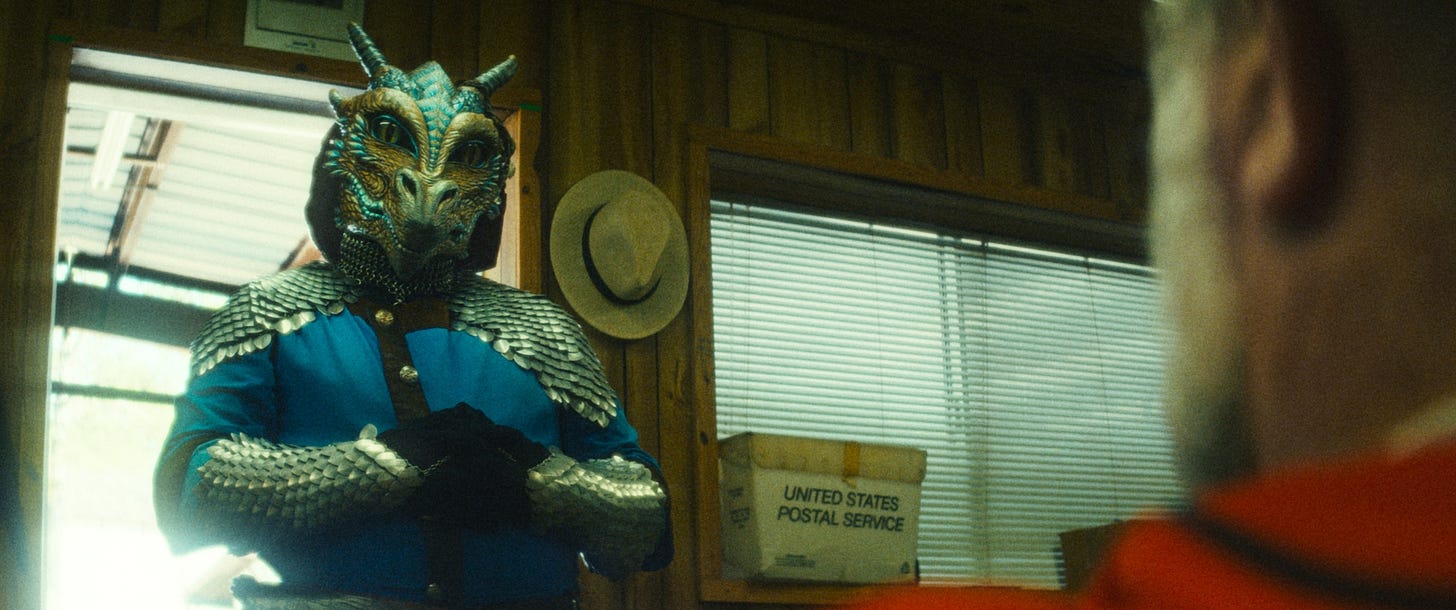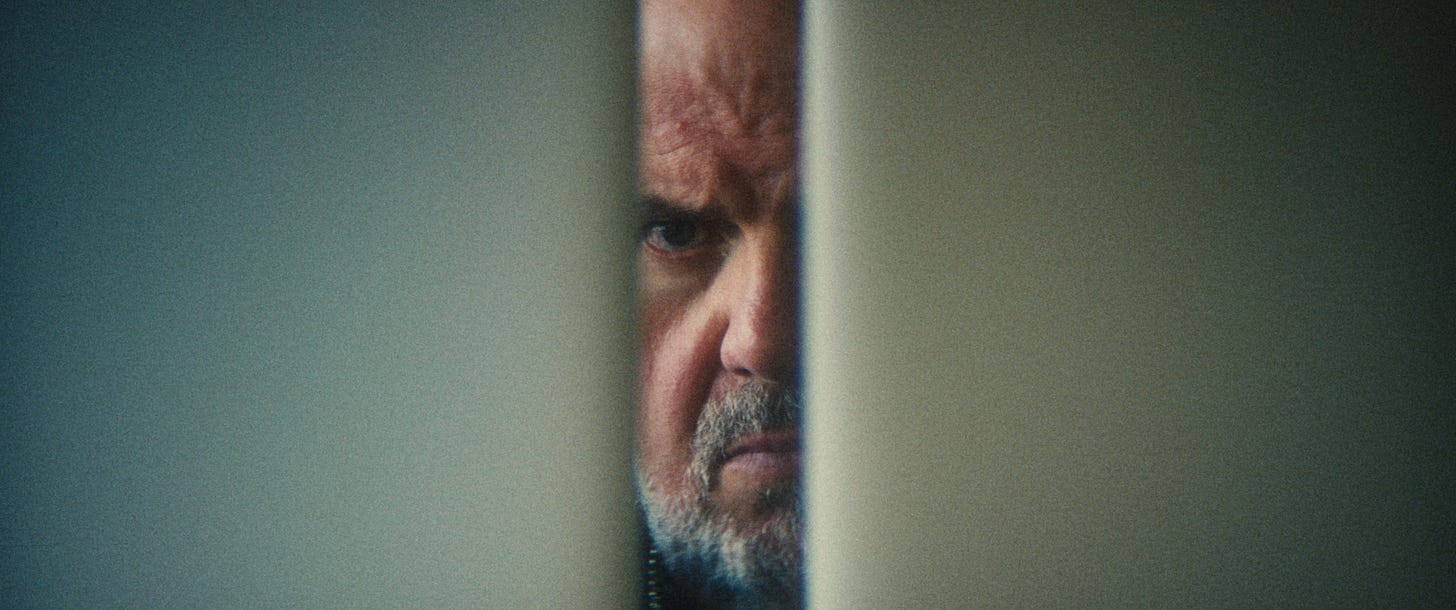Ren Faire Cinematographer Nate Hurtsellers Crafts an Image as Epic and Grandiose as Its Characters
The visuals of this HBO docuseries are easily as memorable as its outrageous plot twists.
Welcome to the wild and wonderful era of Emmy Awards: Phase 1, a time before nomination voting when the arbitrary rules governing what is timely are set aside, and we can discuss projects that were released weeks or months earlier and deserve to be top of mind again. Ren Faire premiered June 2, 2024, on HBO.
The premise alone is ripe with possibility: send a documentary film crew to the Texas Renaissance Festival (the largest Renaissance fair in the United States) and immerse them in that world. But the resulting three-episode Ren Faire docuseries on HBO is even wilder than that. Partly through sheer luck, partly director Lance Oppenheimer’s eye for a developing story, and partly a peerless example of how story can influence style. This is a documentary that transforms everyday people into the kinds of epic characters at home in a Renaissance fair.
“That sort of proscenium, widescreen, anamorphic [look] was planned from the onset,” cinematographer Nate Hurtsellers says. “We wanted it to be fantasy. We didn't want it to be too situated in reality.”
That choice creates a visual vocabulary that encompasses all of the disparity inherent in a Texas-based Ren fair. Despite owner (and ruler) George’s insistence, there are anachronisms galore throughout the fair. ”When you go there, what's so crazy is there might be like a trash can with some pickles and beer on your left, and then you turn around and there's a parade with a king,” Hurtsellers says.
Oppenheimer and Hurtsellers smartly focused on smooth tracking shots through Ren Fest, positioning the camera as an audience surrogate. “You get to actually push the viewer through the space and see the continuity and discontinuity,” Hurtsellers says. “And also, you don't see a lot of Steadicam in documentary, and we felt like it elevated things. But there's humor in the objective look and letting people play out in a wide shot.”
Oh yes, Ren Faire allows the pitiless gaze of the camera to reveal some truly uncomfortable truths. There’s Jeff, the loyal general manager angling to take over Ren Fest. “Kettle corn king” Louie is determined to buy the fair, much to Jeff’s chagrin. And Darla, an even-keeled former elephant trainer, keeps getting drawn into political machinations. And pulling all their strings and keeping them destabilized is “King George,” the octogenarian mastermind behind Ren Fest who incorporated a town around it and serves as mayor. Take your worst, most toxic boss, and multiply it by five. That’s George, dangling his retirement in front of his staff in between going on dates at Olive Garden with women he meets on sugar daddy sites. (One prerequisite? They cannot have fake breasts. George will ask.)
What Oppenheimer, Hurtsellers, and their teams accomplish with their cameras is akin to what Joan Didion once said about writers: They’re always selling someone out. And to watch Ren Faire is to wonder, over and over, what compelled these people to expose themselves in this way.
”Olive Garden was like the white whale of the production, actually,” Hurtsellers says. “It really took some time to build the trust with George that he would even let us do the Olive Garden thing. I think that was our last bit of the shoot.”
Those scenes have an almost brutal mundanity to them that underscores the difference between George in the real world and George within his fiefdom, and highlights what he’d be giving up by stepping down. Within that world, Oppenheimer and Hurtsellers drew inspiration from David Lean epics, Magnolia, and other features that add an air of grandiosity that suits the story. Especially as that story takes an often grim turn, with the cameras catching moments of breathtaking cruelty from George directed at his employees. Including firing Jeff in one especially cringe-inducing scene.
“ We got an idea that something might be happening the night before,” Hurtsellers says of capturing that on the fly. “And we weren't told what was gonna happen. We just knew that something was gonna happen. So we went there under the guise of filming statues and plants and establishing shots.”
Eventually, the team managed to record George’s icy dismissal of Jeff surreptitiously, then accompany Jeff home. “We didn't bring the camera in. We weren't trying to push that because Jeff was truly devastated,” Hurtsellers says. “So we just went there and we brought him bourbon, and he was crying. And eventually he was like, ‘I want to talk about it. I want people to see this.’”
That was a side effect of working as a small crew so closely while filming these big-hearted people: emotional fallout. “When you're shooting, there's a level of objective emotion you have, at least for me behind the camera. It's almost like a shield,” Hurtsellers says. “But it was really deeply troubling a lot of the time. George is an extremely complicated person. He can be really fun and generous, and then suddenly will bite your hand. That was rarely put towards us, but it was often put towards people we cared about. Yeah, it was hard to be four feet away from some awful stuff.”
Luckily, the crew had movie nights back at their Airbnb to unwind with, and a true leader in Oppenheimer. ”Lance is exceptional,” Hurtsellers says. “Obviously, I brought some of my sensibility, but Lance has really got such an eye for humor and humanity and guiding the ship and the camera.. He's got such a vision. It was so cool to be along for it.”
Nate Hurtsellers is the cinematographer behind Lance Oppenheimer’s Ren Faire and his short, Frank, as well as Netflix’s Bonding and the feature films Down Low and Theater Camp. (As always, this partial list of credits is indicative of nothing more than my idiosyncratic tastes.)





